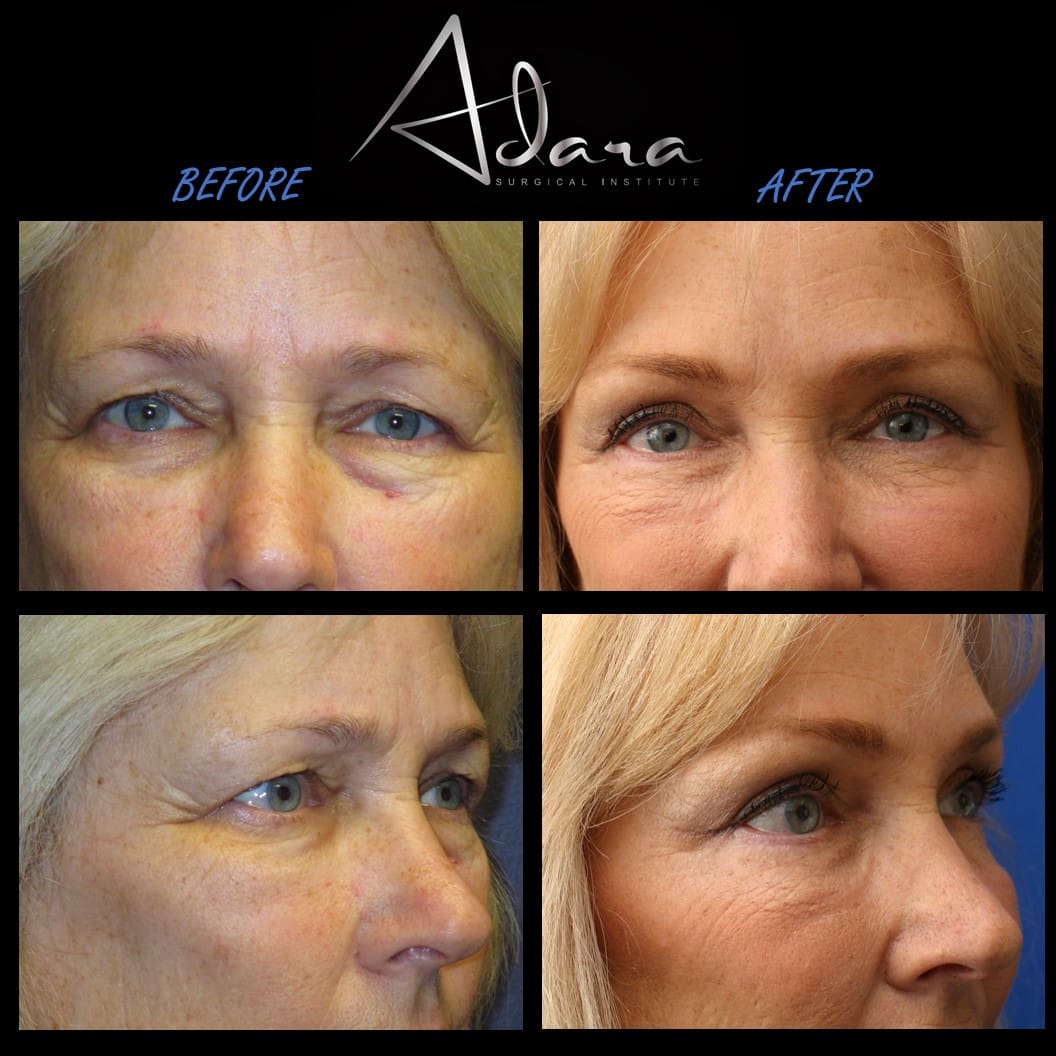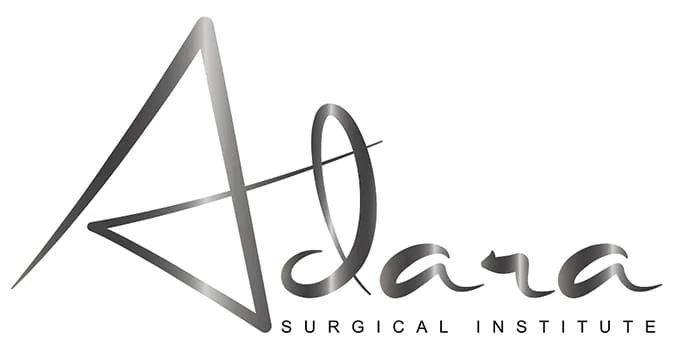The brow and forehead are two of the most expressive areas of the face and among the first to show signs of aging.
Over time, deep creases can develop in the forehead, and the eyebrows may begin to droop or become asymmetrical. These changes can make you appear tired, angry, or older than you feel.
At Adara Surgical Institute, we perform both brow lift and forehead lift surgical procedures. These cosmetic procedures are designed to improve the appearance of the upper face by addressing sagging skin, deep lines, and asymmetry, helping patients achieve a more youthful appearance.
Dr. Hardeep Dhaliwal, a quadruple board-certified facial cosmetic and oral and maxillofacial surgeon, uses advanced 3D facial imaging and refined surgical techniques to personalize each patient’s treatment for optimal results.
What Is the Difference Between a Brow Lift and a Forehead Lift?
Though both procedures aim to rejuvenate the upper third of the face, they differ in focus:
- A brow lift raises the eyebrows to improve brow position and contour, reducing the appearance of hooded upper eyelids or a furrowed brow.
- A forehead lift smooths the horizontal lines and furrows of the forehead by tightening the underlying tissues and skin.
In many cases, these procedures may be combined to address both concerns in a single surgery. They are often performed in combination with a facelift. When combined, they can deliver comprehensive rejuvenation of the upper, mid, and lower face. Learn more about facelift surgery.
Advanced 3D Imaging for Surgical Planning
Every surgical plan at Adara Surgical Institute begins with a Vectra 3D facial scan.
This advanced imaging system lets you preview potential outcomes, assess facial symmetry, and better understand how your brow or forehead lift will impact your overall appearance. It also allows Dr. Dhaliwal to plan incision sites and tissue adjustments with precision.
Brow Lift Techniques
Brow lift surgery focuses on repositioning and reshaping the eyebrows to reduce drooping and create a more alert, open expression.
Each technique is selected based on your facial structure, skin condition, and desired outcome. Brow lift surgery is ideal for individuals looking to elevate sagging or heavy brows and achieve a more open, refreshed look.
Endoscopic Brow Lift
This technique uses small incisions and a camera (endoscope) for precise internal access to the muscles and tissues of the upper face.
It elevates sagging brows and smooths wrinkles by repositioning tissues and removing excess skin to enhance the shape and contour of the brow.
Ideal for:
- Mild to moderate brow descent
- Patients seeking natural results with minimal scarring
Temporal Brow Lift
Focuses on lifting the outer portion of the brows. Often paired with eyelid surgery for a refreshed eye area.
Ideal for:
- Hooding or heaviness at the outer brow
Coronal Brow Lift
This traditional technique involves a long incision across the scalp, typically within the hair-bearing area. It allows for a broad lift of the entire brow and is best suited for patients who need more dramatic elevation.
Ideal for:
- Patients with significant brow descent
- Those with thick forehead or scalp tissue
Direct Brow Lift
Removes excess tissue directly above the eyebrows to provide a powerful and direct lift.
Ideal for:
- Men with receding hairlines or asymmetrical brows
- Patients not suited for scalp-based incisions
Forehead Lift Techniques
Forehead lifts are designed to smooth deep horizontal lines and glabellar creases by tightening the skin and repositioning the underlying muscles.
Endoscopic Forehead Lift
Similar to the brow lift, this technique uses small incisions placed just behind the hairline to access and modify forehead muscles.
It focuses on reducing horizontal forehead lines and frown lines by tightening and repositioning the underlying tissues for a smoother, more even forehead appearance.
Benefits:
- Hidden incisions
- Minimal scarring
- Faster recovery
Coronal Forehead Lift
Involves a long incision within the hair-bearing scalp to provide a more significant lift and skin tightening.
Ideal for:
- Severe forehead wrinkles
- Thick forehead skin
After Surgery: What to Expect
Patients may experience temporary swelling, bruising, and tightness. Recovery time varies depending on the specific technique used and your body’s natural healing response.
Antibiotics may be prescribed, and sutures are typically removed within one week. Cold compresses and gentle eye exercises can reduce swelling and promote healing.
Most patients return to normal activities within 1–2 weeks after surgery. Makeup can generally be resumed after two weeks. Final results develop over several weeks or months as swelling subsides and tissues settle. A follow-up evaluation will be scheduled to monitor your healing and satisfaction.
Before & After
See real patient transformations.

Why Patients Choose Adara Surgical Institute
- Led by Dr. Hardeep Dhaliwal, quadruple board-certified in facial cosmetic and oral/maxillofacial surgery
- Personalized care guided by your anatomy, preferences, and goals
- Minimally invasive options using endoscopic techniques
- Vectra 3D imaging for surgical precision
ASI Medical SPa
Schedule Your Consultation
If you are ready to explore facial cosmetic surgery, contact ASI Medical Spa in Issaquah, WA today. Call (425) 428-5888 or visit us at 6505 226th Pl SE STE #100 Issaquah, WA.
We are located in the heart of Issaquah, WA, in the back of Meadow Creek Business Center. We have plenty of parking and easy access into our building, which is conveniently located on the first floor and easily accessible for all patients.
Request an AppointmentFAQs About Forehead and Brow Lifts
Are a brow lift and forehead lift the same?
No. While both procedures rejuvenate the upper face, a brow lift focuses on lifting and shaping the eyebrows, whereas a forehead lift targets forehead lines and furrows.
Can the two procedures be combined?
Yes. Combining a brow lift with a forehead lift may offer the most balanced and natural-looking results, depending on your goals and anatomy.
How long do the results last?
Results typically last 10 to 15 years, though this varies by patient.
Will there be scarring?
Most incisions are hidden in the hairline or natural creases and heal with minimal visibility, often resulting in no visible scar.
